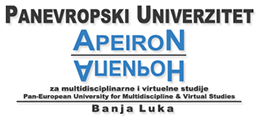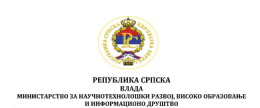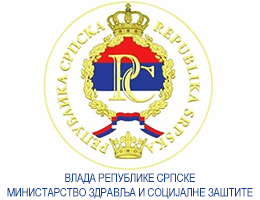Differences in Perception, Knowledge and Attitudes Students Physical Education and Sport on Use of Prohibited Substances in Sport
Volume 5, Issue 1 (2015)
Volume 5, Issue 1 (2015)
Differences in Perception, Knowledge and Attitudes Students Physical Education and Sport on Use of Prohibited Substances in Sport
Abstract:
The problem of the use of banned substances (doping) in sport has been, is and will be an ongoing problem that undermines the very spirit of sport, beauty and pleasure, and very often the health of athletes. Therefore, it is essential to solve this problem, if possible, permanently, although it is sometimes simply impossible to do. The research included total 200 students from Faculty of Physical Education and Sport, of which 100 students were from the University in Eastern Sarajevo (Bosnia and Herzegovina) and 100 students from the Department of Physical Education AMU Aligarh (India), aged 18-26 years. Of the total sample, 170 (85%) of the participants were males, while 30 (15%) were females. The main objective of the study was to test the level of differences in knowledge and identify students' attitudes about the use of prohibited substances in sport. To collect the necessary information has been used an anonymous questionnaire with 13 clearly defined questions (11 closed questions and two open-ended questions) that are related to specific knowledge, attitudes about doping in sport. The obtained results are relevant to the global indicator of awareness, knowledge and attitudes of the population of students about the problem of today's modern sport which is called doping. Of the total sample 85% of the students marked the athletics as a sport with the most doping scandals, followed by Cycling (43%) and Body building and Weightlifting (22%), while the Sports games (28%), Cricket (25%), Shooting and Chess (19%), as well as sports with the least number doping scandals.
Keywords:
pharmacological agents, health condition, consequences, prevention, education
Full Text:
References:
- Baron, A.D., Martin, D.M., & Magd, S.A. (2007). Doping in sports and its spread to at-risk populations: an international review. World Psychiatry, 6 (2), 118–123.
- BBC (15.07.2012). London 2012: All medallists to be drugs tested at Olympics. BBC News Online. Retrieved 28.07.2012, from http/:www.bbc.co.uk/sport/0/olympics/1884957.
- Bondarev, D.V., Ajitskiy, K.Y., Galchinsky, V.A., Labskir, V.M., & Druz, V.A. (2008). Attitude towards doping of Sports students and students of Polytechnic Sciences. Journal of Pedagogic, Pchology and Medico-Biologic Problems of Physical Training and Sport, (5),18–24.
- Bondarev, D.V., Galchinsky, V.A., Labskir, V.M., Druz, V.A., & Ajitskiy, K.Y. (2009). Doping prevalence and knowledge among high school students. Proceedings of the International scientific conference Actual problems of developing Sport for All, (pp. 293–295). Ternopil.
- Bondarev, D.V., & Sirenko, R.R. (2010). Doping amongst students: Knowledge, Attitude, Behaviour. Proceedings of the 1-st scientific conference Physical Education and Sport Improving among Sevastopol Youth, (pp.10–25). Sevastopol: Sevastopol National Technical University and World Anti-Doping Agency.
- Dhar, R., Stout, C.W., Link, M.S., Homoud, M.K., Weinstock, J., & Estes, N.M . ( 2005). Cardiovascular toxsicites of performance-enhancing substances in sport. Mayo Clinic Proceedings, 80 (10), 1307–1315.
- Deligiannis, A., Björnstad, H., Carre, F., Heidbüchel, H., Kouidi, E., Panhuyzen-Goedkoop, N.M. (2006). ESC study group of sports cardiology position paper on adverse cardiovascular effects of doping in athletes. European Journal of Cardiovascular Prevention & Rehabilitation, 13(5), 687–694.
- Erhnborg, C., & Rosen, T. ( 2009). The psychology behind doping in sport. Growth Hormone & IGF Research, 19, 285–287.
- Grohmann, K. (07.11.2012a). Doping-IOC strips Uzbek wrestler of Olympic bronze. Reuters. Retrieved 04.08.2012, from http//:www.reuters.com/article/2012/117077us-doping-olympics-wrestler-idUSBRE8A...
- Grohmann, K. (24.07.2012b). Testers nab more than 100 athletes - WADA. Reuters. Retrieved 04.08.2012, from http//:www.reuters.com/London-olympics2012/articles72012/07/247testers-nab-more....
- Hartgens, F., & Kuipers, H. (2004). Effects of androgenic-anabolic steroids in athletes. Sports Medicine, 34(8), 513–554.
- Hasson, N., Salem, M., & Sayed, M. (2009). Doping and effect of anabolic androgenic steroids on the heart:histological, ultrastructural, and echocardiographic assessment in strength athletes. Human & Experimental Toxicology, 28(5), 273–283.
- Jovanović, D., & Radovanović, D. (2001). Doping i sport [Doping and sport. In Serbian]. Niš: Roller print.
- Kindlundh, A.M., Isacson, D.G., Berglund, L., Nyberg, F. (1998). Doping among high school students in Uppsala, Sweden: A presentation of the attitudes, distribution, side effects, and extent of use Scandinavian Journal of Public Health, 26(1), 71–74.16.
- Kanayama, G., Gruber, A.J., Pope, H.G., Jr., Borowiecki, J.J., & Hudson, J.I. (2001). Over-the-counter drug use in gymnasium: an unrecognized substance abuse problem? Psychoter Psychosom, 70 (3), 137–140.
- Khan, Z., Singh, S.P., 1, Ali, A.B, & Khan, N.A. (2014). Attitudes of Students of Sports Participants about Doping in Sports. International Journal of African and Asian Studies-An Open Access International Journal, Vol.5, 40-44.
- Kokkevi, A., Fotiou, A., Chileva, A., Nociar, A., & Miller, P. (2008). Dailiy exercise and anabolic steroids use in adolescents: a cross-national European study. Substance Use and Misuse, 43 (14), 2053–2065.
- Laure, P., Binsinger, C., & Lecerf, T. (2003). General practitioners and doping in sport: attitudes and experience. British Journal of Sports Medicine, 37, 335–338.
- Lucidi, F., Zelli, A., Mallia, L., Grano, C., Russo, M.P, & Violani, C. (2008). The social-cognitive mechanisms regulating adolescents' use of doping substances. Journal of Sports Sciences, 26 (5), 447–456.
- Mc Cabe, E.S., Brower, K,J., Brady, T., West, B.T., Toben, F., Nelson, T.T., Wechsler, H. (2007). Trends in non-medical use of anabolic steroids by U.S. college students: Results from four national surveys. Drug Alcohol Depend, 90 (2-3), 243–251.
- Melia, P., Pipe, A., Greenberg, L. (1996). The use of anabolic-androgenic steroids by Canadian students. Clinical Journal of Sport Medicine, 6(1), 9–14.
- Michalák, K., and Kyselovičová, O. (2001). Užívanie anabolík počas kondičného tréningu rekreačne športujúcich mužov [Taking anabolic steroids during conditioning training recreational athletes. In Slovak]. Telesna výchova a šport, 11 (2), 17–21. Bratislava.
- Mougios, V. (2001). Doping abuse in recreational sports. In C. Peters, T. Schulz., & H.Michina (Eds.), Biomedical side effects of doping (pp.183–191). Bonn: Bundesinstitut fur sportwissenschhaft.
- Pupiš, M, & Polgar,V. (2006). Znalosti športujúcej mládeže o dopingu a možnosti dopingovej prevencie [Knowledge sportmen zouth of doping and possible doping prevention. In Slovak] In: Proceedings of the International Scientific Seminar of Doctoral Candidates: a humanistic form of sport and physical education, (pp. 46). Bratislava: UK FTVŠ.
- Pupiš, M., & Korčok, P. (2004). Vytrvalostný šport a doping [Endurance sport and doping. In Slovak]. Slovenská chôdza, 8 (4), 36.
- Parssinen, M., & Sepapala,T. (2002). Steroid use and long-term health risk in former athletes. Sports Medicine, 32(2), 83–94.
- Payne, J.R., Kotwinski, P.J., & Montgomery, H.A. (2004).Cardiac effects of anabolic steroids. Heart, 90, 473–475.
- Pavlović, R. (2006). Atletika-antropološka obilježja. [Athletics-anthropological characteristics. In Serbian] Istočno Sarajevo:Fakultet fizičke kulture.
- Pavlović, R., & Pupiš, M. (2013). Student attitudes and knowledge of physical education and Sports on use doping in sport. Sport Science, 6 (2), 21–28.
- Pavlović, R., & Idrizović, K. (2013). Attitudes of students of physical education and sports about doping in sport. FACTA UNIVERSITATIS Series: Physical Education and Sport, 11(1), 103–113.
- Petroczi, A. (2007) Attitudes and doping: A structural equation analysis of the relationship between athletes' attitudes, sport orientation and doping behaviour Substance Abuse: Treatment, Prevention, and Policy, 2(1), art. no. 34
- Rachoń, D., Pokrywka, L., & Suchecka-Rachoń, K. (2006). Prevalence and risk factors of anabolic-androgenic steroids (AAS) abuse among adolescents and young adults in Poland. International Journal of Public Health, 51(6), 392–398.
- Živanović, N. (2000). Prilog epistemiologiji fizičke kulture. [Contribution epistemology of physical education. In Serbian] Panoptikum Niš
- Wanjek, J.B., Rosendahl, B., Strauss, H., & Gabriel, H (2007). Doping, Drugs and Drug Abuse among Adolescents in the State of Thuringia (Germany): Prevalence, Knowledge and Attitudes. International Journal of Sports Medicine, 28(4), 346–353.
- Wroble, R.R., Graay, M., & Rodrigo, J.A. (2002). Anabolic steroids and preadolescent athletes: prevalence, konwledge and attitudes. Sport Journal, 5(3), 1–8.
- Wilson, S. (13.08.2012). "Belarus shot putter stripped of Olympic gold".Associated Press. Retrieved11.10.2012,fromhttp://www.canada.com/sporta/all/Belarusian+shot+putter+Nadzeya+Ostapshu....
- Yesalis, C,E., Michael, S., & Bahrke, M.S. (2000). Doping among adolescent athletes. Best Practice & Research Clinical Endocrinology & Metabolism, 14(1), 25–35.






